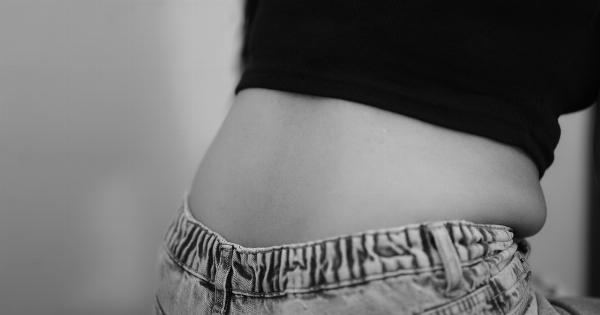Urinary incontinence is a common condition that affects many women during and after menopause. It is characterized by the involuntary loss of urine and can range from mild leaking to complete loss of bladder control.
While it can be a challenging and uncomfortable condition to deal with, there are plenty of treatment options available to help manage urinary incontinence and improve quality of life.
Types of Urinary Incontinence
There are several different types of urinary incontinence that women may experience. These include:.
Stress Incontinence
Stress incontinence is the most common type of urinary incontinence in women, and it is often associated with menopause.
This type of incontinence occurs when the pelvic muscles that support the bladder become weakened or damaged, making it difficult to hold urine in.
Urge Incontinence
Urge incontinence is another common type of incontinence that occurs when the bladder muscles contract impulsively, causing a sudden and urgent need to urinate.
Women who experience urge incontinence often find themselves rushing to the bathroom frequently, and may leak urine in the process.
Mixed Incontinence
As the name suggests, mixed incontinence is a combination of stress and urge incontinence. Women with mixed incontinence experience both types of incontinence, often simultaneously.
Overflow Incontinence
Overflow incontinence occurs when the bladder is unable to fully empty, causing urine to leak out. This type of incontinence is not as common in women, and is often caused by an obstruction in the urinary tract or nerve damage.
Causes of Urinary Incontinence in Menopause
There are several factors that can contribute to urinary incontinence in women during menopause. These may include:.
Hormonal Changes
During menopause, levels of the hormone estrogen decline significantly. This can cause the muscles in the urinary tract to become weak or damaged, making it difficult to hold in urine.
Age
As women age, their pelvic muscles naturally weaken, which can contribute to urinary incontinence.
Pregnancy and Childbirth
Pregnancy and childbirth can cause damage to the pelvic muscles, which can lead to urinary incontinence later in life.
Obesity
Carrying excess weight can put added pressure on the urinary tract, which can contribute to urinary incontinence.
Smoking
Smoking has been linked to an increased risk of urinary incontinence in women, as it can cause coughing and other respiratory issues that put added strain on the pelvic muscles.
Treatments for Urinary Incontinence in Menopause
While urinary incontinence can be a challenging condition to deal with, there are many effective treatment options available to help manage symptoms. These may include:.
Behavioral Therapy
Behavioral therapy involves making lifestyle changes that can help reduce the frequency and severity of urinary incontinence.
This may include exercises to strengthen the pelvic muscles, as well as bladder training exercises to help women regain control over their bladder.
Medications
There are several different medications that may be prescribed to women with urinary incontinence, including anticholinergics, which help relax the bladder muscles, and topical estrogen creams, which help improve the strength and elasticity of the pelvic muscles.
Surgical Treatments
In some cases, surgery may be recommended to help treat urinary incontinence. There are several different surgical procedures that may be used, including bladder sling surgery and urethral bulking.
Incontinence Products
For women who continue to experience urinary incontinence despite other treatment options, incontinence products such as pads and adult diapers can be a helpful way to manage symptoms and improve quality of life.































